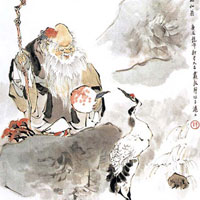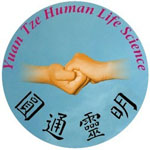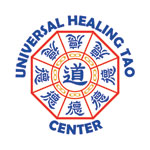Where does Qi Gong come from?

Qigong practice which has been kept secret in China for over 5000 years within families and esoteric schools, has now been made available to the general public and benefiting millions of people around the world.
The history of qi-gong dates back more than 5000 years. The ancients, by observing nature and their own bodies, gradually realized that certain movements and breathing techniques could enhance body functions. Around 1953 a teacher called Liu Gui-zheng published a paper entitled "Practice On Qigong Therapy", and from this time onwards Qi Gong became commonly adopted as a formal name for the exercises.
The development of Qi Gong can be divided into four major periods:
Prior to 206 BC
This period was marked by the I Ching (Book of Changesc.1122 BC), the first book to introduce the concept of Qi. At this time the ancients used the concept of the universe to explain the laws of nature and the integration of the three natural energies of heaven, earth and man.
During the Zhou dynasty, the founder of Taoism Lao Tze (born in 590 BC), wrote his book Tao De Jing (Classic on the Virtue of the Tao). Interest in Qi heightened and Qi Gong became one of the roots of Chinese medicine. Concepts such as yin and yang and the five elements were also developed.
206 BC - 500 AD
During the Han dynasty (206 BC - 220 AD), Buddhist and meditation methods were brought from India, and practitioners cultivated their Qi to a deeper level, working with the internal functions of the body, striving to control their bodies, minds and spirits in order to escape the cycle of re-incarnation.
500 AD - 1911AD
During the Liang dynasty (502-557 AD), it was discovered that Qi Gong could be used for martial arts purposes. Many different styles of Qi Gong were founded, such as Taichi Nei Dan (Internal Elixir) and Shaolin Wai Dan (External Elixir) Qi Gong. Later in the Qing dynasty (1644 - 1911 AD), Qi Gong practices from India, Japan and other countries also arrived in China due to improved communication between the countries.
1911AD - present
Qigong has gained higher priority and more rapid development in the last 100 years. Medical workers and Qi Gong masters have made efforts to popularize it for its health preservation and disease prevention strategies. Scientists study Qi Gong in terms of physiology, biochemistry and modern medicine.
Today there are millions of practitioners of Qi Gong worldwide, and its popularity and usage is likely to increase due to its efficacy and lack of side effects.
Qi Gong traditions
Qi Gong can be classified into five major traditions;
- Confucianism
- Buddhism
- Taoism
- Medical Qi Gong
- Martial arts
Each tradition has its own purpose and different methods of training and practice. Among each major tradition, there are various schools of qi-gong that have evolved, and Masters of modern-days Qi Gong are still creating new forms.
No religious belief is required to learn Qi Gong. A person is likely to subscribe to a particular school of Qi Gong depending on their needs.
| Traditions | Intent |
| Medical Qi-gong | Medical qi-gong emphasizes the free flow and balance of qi (vital energy) in the body. The primary purpose is to assist illness and disease. |
| Taoist Qi-gong | Focuses on the preservation of the physical body, virtues and longevity. |
| Buddhist Qi-gong | Aims to liberate the mind, cultivate virtue and obtain enlightening wisdom. The human body is considered a tool for attaining enlightenment. |
| Confucian Qi-gong | Aims to provide high moral character and intelligence. |
| Martial Arts Qi-gong | Trains the body for protection in combat. |
Glossary of Qi Gong terminology
Qi
Qi is the energy that gives life; life-sustaining force from whence all matter in the material world is manifested. Qi is intelligent and can therefore be described as 'energy impregnated with information'. more about Qi
Qi Gong
Qi Gong means to 'cultivate the energy of life'. Qi Gong is the umbrella term used to describe the many exercises that are used to replenish, store and conserve our life force energy.
Wu Qi
According to Taoist cosmology, before the beginning of the manifested universe, there was a state of total emptiness. All was a void. The ancient Taoists gave it a name. It was called Wu Qi.
Yin Yang
The interplay of Yin and Yang is the essential expression of Wu Qi. The Taoists named this process 'Tai Qi' or "Supreme Ultimate". All the multiplicity of phenomena found in the universe are the result of the interaction of Yin and Yang.
Five Elements
The interaction of Yin and Yang is further broken down into the five basic phases of energy behavior called the 'Five Elemental Forces of Nature'. These Five Elements are mirrored in the human body through the five major organ systems.
Macrocosm - Microcosm
According to the Taoists, our body is a macrocosm (miniature) of the macrocosm (universe). We have our own inner 'landscape' and 'eco-climate' which needs looking after in order to stay healthy and balanced.
The Eight Forces
Like the Five Phases of Energy, the Eight Forces of Nature are also the result of the interplay of Yin and Yang. Together they form the power symbol of the pakua, and combined together they form the 64 hexagrams of the I Ching.The eight forces are the basic energy formations of nature.
The Six Directions
There are six directions around us: above, below, infront, behind, to the right, to the left. During Qi Gong practice you will learn to connect to the six directions and draw in Qi to replenish your energy.


